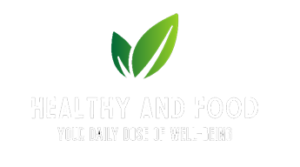In today’s hurried, harried world of food shopping, many people take the claims on the fronts of food packages -“healthy,” “low carb” or “low fat” – as the final word on nutrition.
But by failing to read the small print, particularly the “Nutrition Facts” panel and the ingredients list, consumers may not be aware of what else they are getting, namely added sugars and trans fats. For example, did you know that a chocolate peanut butter PowerBar Performance Bar has 20 grams of sugar? That’s twice the amount of sugar in a Krispy Kreme original glazed doughnut.
Reading labels, particularly if you are following a controlled-carbohydrate lifestyle, is one of the best ways to take control of what you buy and eat.
“We believe – and emerging science confirms – that a high- carbohydrate diet, particularly one that includes a significant amount of added sugars in a variety of forms, contributes to many health-related concerns,” said nutritionist Colette Heimowitz, vice president of education and research for Atkins Health & Medical Information Services. “Thus, it’s crucial to read the labels on all packaged foods.”
Always look at the serving size, for instance, to ensure that the portion will be able to satisfy your appetite. In many cases, it is smaller than you might assume. If you don’t read the label, you may never realize that the smoothie you just drank is actually two servings, not one. Also, look for an adequate amount of fats, fiber and protein, all of which assure satiety.
Knowing what ingredients should not be in products is equally crucial. The front of the package may say “no trans fats,” but the ingredients list might reveal trace amounts of hydrogenated or partially hydrogenated oils. A product that contains less than 1 gram of these oils is not required to include them on the Nutrition Facts panel. The only way you can be sure that a product is free of these unnatural, harmful fats is if there is no mention of them in the detailed ingredients list.
Avoiding added sugars also is important. Natural sugars in milk and fruit are fine, while added processed sugars, such as sucrose (table sugar) or corn syrup, should not be part of any healthy diet. Intake of sugar alcohols, which often are used in low-carb products to replace sugar and add bulk, also should be monitored.
A controlled-carb approach requires strict monitoring of the total carbohydrate content of any product. Atkins products do the work for the consumer, omitting added sugars and trans fats and providing a Net Atkins Count, based on clinical testing, that displays only the number of carbs that will have an impact on blood sugar.
Other products may require carb-conscious consumers to do this work themselves. In this case, subtract fiber, sugar alcohols and glycerine from the total carbohydrate count. – NU
























